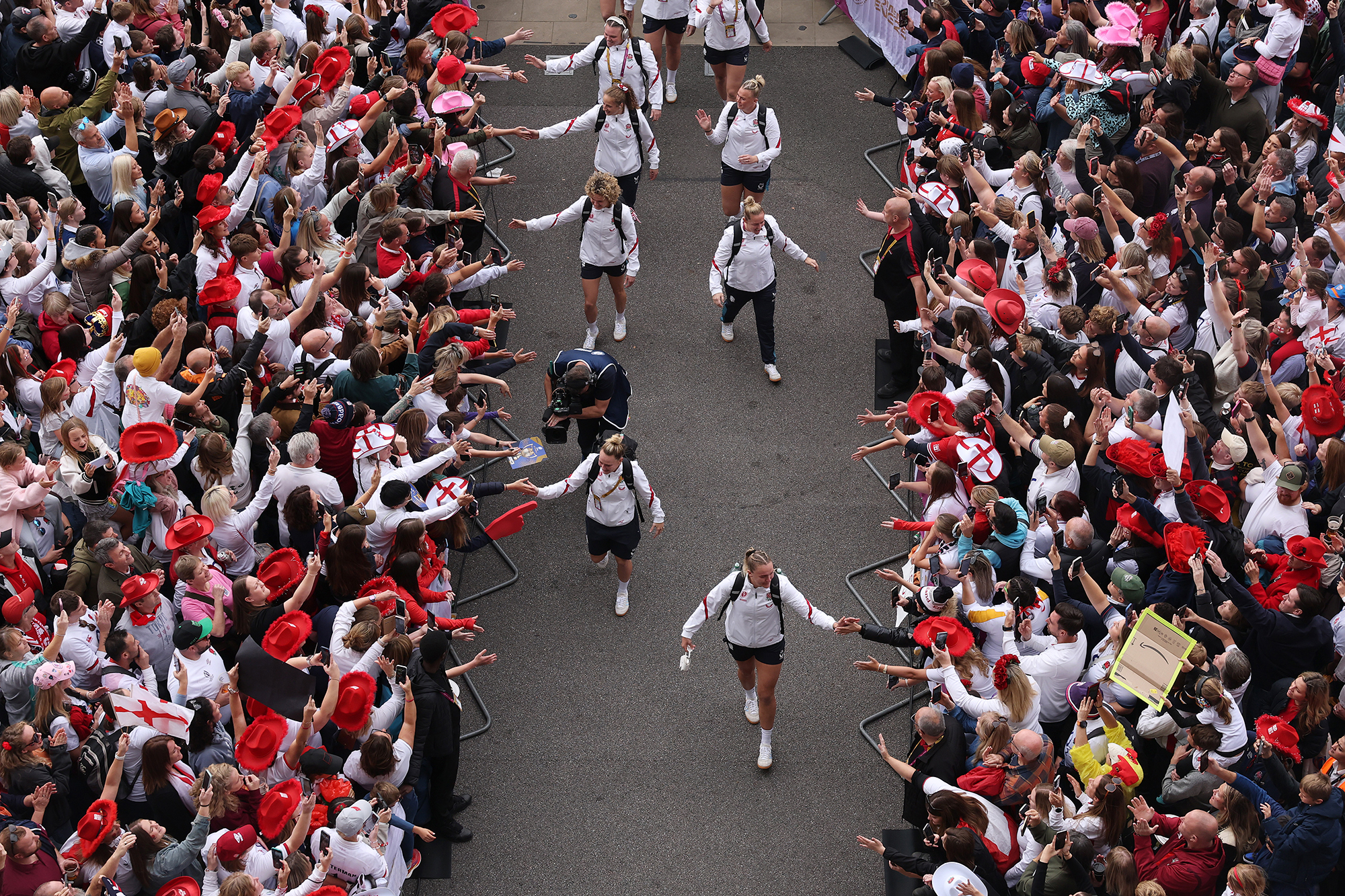There’s a tendency when a tournament ends to view it only through the superlative lens. The best, the biggest, the grandest. The words lose all meaning if overused. But there’s no escaping the superlatives when it comes to the women’s Rugby World Cup, and that’s backed up by the numbers. The final had the highest attendance (81,885) of any women’s rugby match and records were broken all over the pitch and into the stands. An astonishing 444,465 tickets were sold across the whole tournament, more than three times the number sold at the 2022 Rugby World Cup.
England lifting the trophy closed a tournament that had everything the organisers could have hoped for: real, seismic change (we are already seeing an uptick in grassroots participation), great storylines, and intrigue until the end (many, including me, thought Canada might beat England in the final).
According to World Rugby, 50% of attendees had never been to a women’s rugby match before, but 95% intend to return.
Part of the appeal is an improved spectacle. According to data from the tournament and comparing it with the 2022 edition, the ball-in-play time increased alongside the number of tries scored, there were fewer knock-ons, there was more tactical kicking and a 10% improvement in conversion success. Those are all signs that it has become a more entertaining experience for even the casual fan.
The other part is the desire by fans to feel involved in the cultural movement that women’s sport has become. It’s joyful, unapologetically feminine and a celebration of what women can do, at a time when it feels like women are increasingly told what they shouldn’t do, or can’t do, internationally. But above all, the tournament has become part of the national conversation, impossible to be ignored, measurable by the conversations held with taxi drivers or neighbours over the garden fence.
I think back to an article written in a national newspaper in 2020. The rugby journalist wrote that he had never given women’s rugby a second chance after he watched a game “20 or 25 years ago”. He goes on to say that international women’s rugby players are worse than an under-12s school team, and says he only watched women’s rugby when it was on after a men’s match, as a “cursory glance” over his laptop while he was writing his article about the preceding men’s game.
These days, I suspect no newspaper would want to print a piece by their rugby union correspondent saying they hadn’t watched women’s rugby. I saw the writer in the press box at the World Cup final, where he wrote an informed piece about the Red Roses. For all the noise, that felt like the best sign yet of an attitude shift. The times they are a-changing.
Photograph by David Rogers/Getty Images

